
Browse an alphabetical list of photographs. These historical images portray people, places, and events before, during, and after World War II and the Holocaust.
<< Previous | Displaying results 501-510 of 2641 for "Photo" | Next >>
View of the camp for Roma (Gypsies) in Lodz. The original German caption for this photograph was: "Zigeunerlager" (Gypsy camp), #137. In the autumn of 1941, German police authorities deported some 5,000 Roma from Austria to the ghetto for Jews in Lodz, where they resided in a segregated section (part of which is shown in this photograph). Photograph taken between 1940 and 1944.
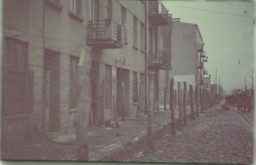
Canadian troops of the 'B' Company, North Shore (New Brunswick) Regiment take cover on June 6, 1944, or D-Day.
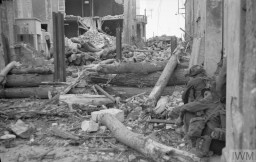
Candles mark the railway tracks leading to the Auschwitz camp during the commemoration of the 60th anniversary of the liberation of the camp. Poland, January 27, 2005.

Medical corpsmen of the US 71st Infantry Division, 3rd US Army look on as captured German soldiers remove bodies from inside a barracks in Gunskirchen. In the foreground, a Jewish girl lies huddled in the straw on the floor of the barracks. Gunskirchen, Austria, May 7, 1945.
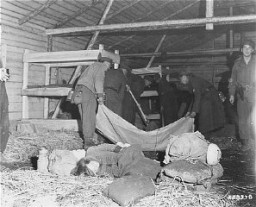
Jewish resistance fighters who were captured by SS troops during the Warsaw ghetto uprising. Warsaw, Poland, April 19-May 16, 1943. The original German caption reads: "These bandits offered armed resistance."
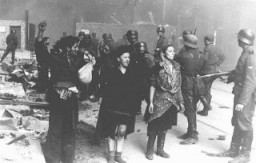
German soldiers arrest Jews during the Warsaw ghetto uprising. Poland, May 1943. The Warsaw ghetto uprising began on April 19, 1943, after German troops and police entered the ghetto to deport its surviving inhabitants. By May 16, 1943, the Germans had crushed the uprising, deported surviving ghetto residents, and left the ghetto area in ruins.
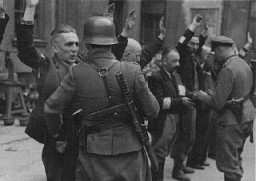
The sign erected by the 9th Armored division on the Ludendorff bridge after its capture. March 11, 1945. US Army Signal Corps photograph taken by W. Spangle.
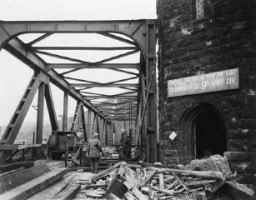
Refugee passengers of the SS Quanza sent a large bouquet of red roses and this message to First Lady Eleanor Roosevelt to thank her for her help. The First Lady made sure President Roosevelt saw both the flowers and the card, which were displayed prominently outside his bedroom.
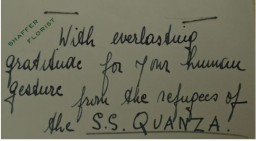
Caricature of Nuremberg International Military Tribunal defendant Alfred Rosenberg, by the German newspaper caricaturist Peis. Nuremberg, Germany, October 1, 1946.
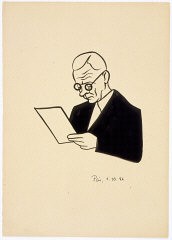
Soon after liberation, a camp survivor receives medical care. Bergen-Belsen, Germany, after April 15, 1945.
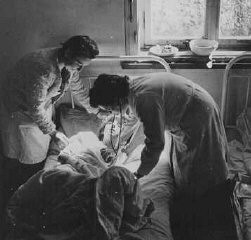
We would like to thank Crown Family Philanthropies, Abe and Ida Cooper Foundation, the Claims Conference, EVZ, and BMF for supporting the ongoing work to create content and resources for the Holocaust Encyclopedia. View the list of donor acknowledgement.